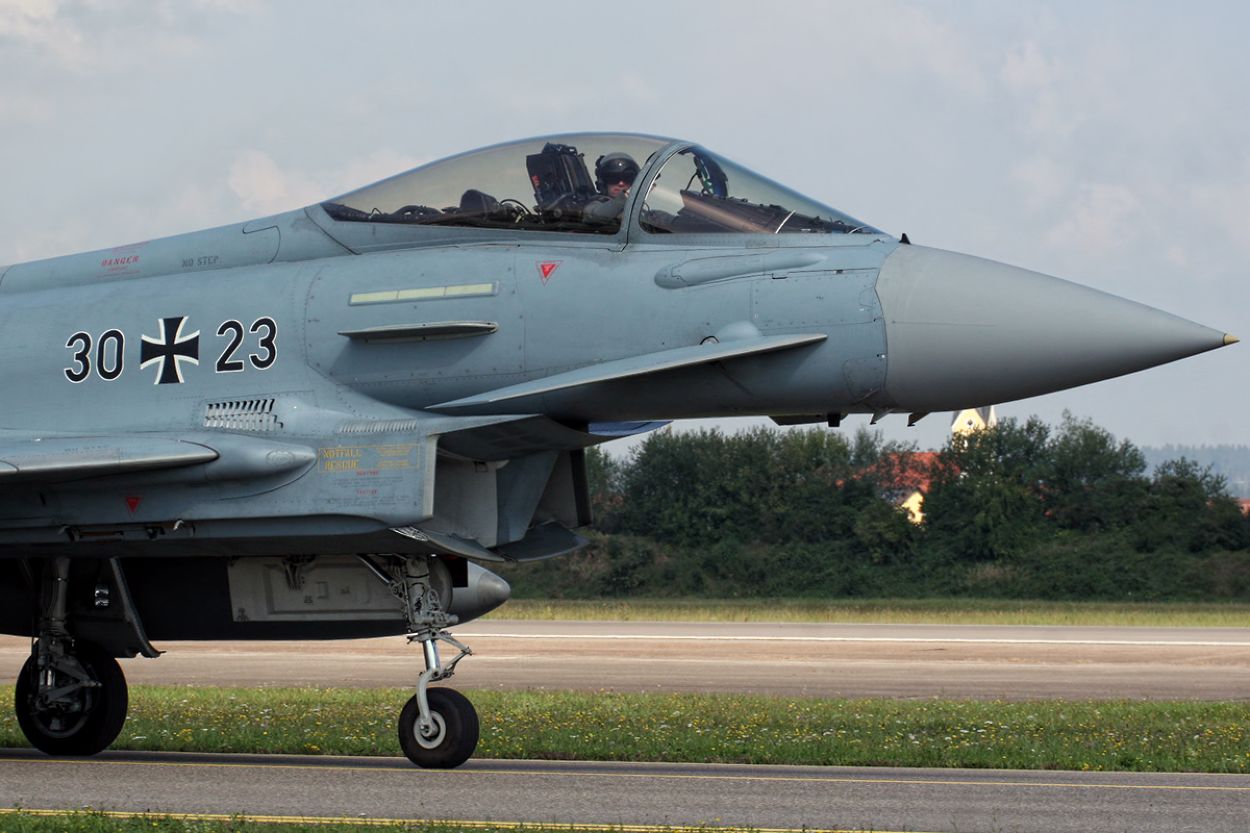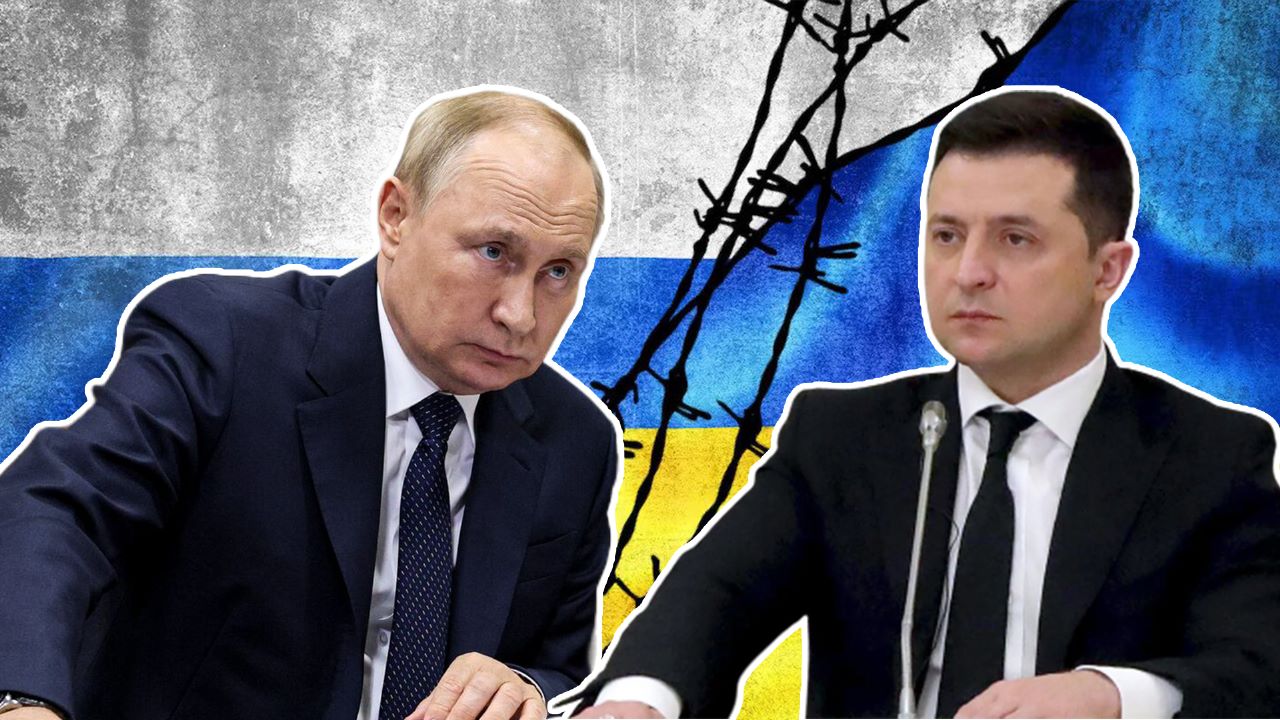Will Germany’s reluctance to increase its military budget affect Ukraine’s resistance to the Russian invasion?
This question is gathering increasing relevance after almost 50 European leaders admitted at a summit meeting on October 5 in the southern Spanish city of Granada that they would not be able to replace the United States’ support for the war-torn country.
Pakistan’s JF-17 ‘Shoots Down’ Six Rafale Fighters During Turkish Wargame? IAF Pilot Decodes Report
But then, the ability of President Joe Biden to keep the United States as the principal source of Ukraine’s military strength remains to be seen, given the unsure budgetary support following the US Congressional chaos due to the Republican infighting.
Even otherwise, Ukraine is supported by the whole of NATO, not the United States alone. And here, the importance of Germany is unmistakable not only as a leading European aid-giver to Ukraine but also as a leader of NATO in realizing the alliance’s higher military ambition and overall readiness as per its New Forces Model(NFM), formulated at the NATO summit in Madrid in June 2022.
Germany is not only the world’s fourth-largest economy, after the US, China, and Japan; it also happens to be Europe’s largest. And that perhaps explains why, following the Russian invasion of Ukraine, NATO’s restructured operational planning entrusted Germany with a much more significant role than in the past.
As Alexander Feltes and Niklas Masuhr, two scholars at the Center for Security Studies (CSS) at ETH Zürich, Switzerland, have explained, Germany is to make a significant contribution to these efforts, with a fully equipped division, 65 aircraft, and 20 ships to NATO’s high-readiness forces from 2025 onwards.
German armed forces, known as Bundeswehr, have been assigned to Poland and Lithuania and will continue to do so in increased numbers. The Bundeswehr is supposed to significantly increase interoperability as part of NATO’s “Framework Nations Concept,” in which German units serve at the core of multinational formations.
Accordingly, in April this year, the operational elements of the Royal Netherlands Army were fully integrated into the Bundeswehr ground forces following decades of collaboration. There are similar plans to integrate Romanian and Czech units.
In the air domain, Germany’s Tornado combat aircraft provide the material basis for NATO’s nuclear deterrence. The Tornado is certified to carry US B61 nuclear weapons and thus enables nuclear sharing.
Tornados also significantly influence NATO’s ability to suppress and destroy enemy air defenses. But as Tornadoes are supposed to retire by 2023, Germany needs new aircraft, and that is why it is buying the F-35 from the US, apart from upgrading the Eurofighter Typhoon and co-developing with France and Spain Future Combat Aircraft Systems (FCAS).
On the front of air defense, particularly missile defense, Germany is supposed to address many critical gaps. Priority is given to multiplying and modernizing US-made Patriot medium- to long-range defense systems. There are also plans to acquire US/Israeli Arrow 3 missiles, intended to intercept medium-range ballistic missiles at altitudes of up to 100 kilometers.
All this needs money. Accordingly, German Chancellor Olaf Scholz declared a “Watershed” (Zeitenwende) in German security and defense policy soon after the Russian invasion of Ukraine. A 100 billion EUR special fund has been created to upgrade Bundeswehr’s capabilities.
But this is proving to be not enough. Even Germany cannot devote two percent of its GDP to defense, a target that NATO set up for the alliance partners way back in 2014.
Germany’s economic health is not in good shape. After experiencing a historic recession following the COVID-19 pandemic, Germany only grew an estimated 1.5% in 2022, slower than one year earlier (2.6%).
In a way, Germany has suffered the most because of the war in Ukraine and the subsequent economic sanctions imposed on Russia. After all, Germany was highly dependent on Russian gas, oil, and coal, with around one-third of its primary energy supply coming from Russia.

The International Monetary Fund forecasts that the German economy will shrink in 2023, making it the only G7 economy to contract this year, so much so that Germany is being described in some economic and political circles as Europe’s “Sick Man.”
Understandably, the German finance minister Christian Lindner is a big votary of the principle of deficit reduction in the country’s budget. He argues that the European Union must return to a focus on deficit reduction and that indebted countries should take dramatic steps to reduce their debt.
And when Lindner, the finance minister of Europe’s largest economy, says this, it does impact many of the EU members, almost all of whom fall well short of spending two percent of GDP on defense. If Germany is not spending two percent of its GDP on defense, there is little likelihood of Spain, Italy, Romania, and France doing so.
Feltes and Masuhr argue that with forecasts for the 2023 fiscal year assuming that Germany will be spending approximately 64.1 billion EUR (some 1.57 percent of projected GDP) on defense, the country will fall short of its two percent target in defense expenditure.
“For a long time, the two percent commitment target was not considered binding in German politics. For example, a Research Services of the Bundestag (German parliament) report argued that the Wales Pledge (NATO pledge in 2014) could not be interpreted as a binding obligation.
This changed with the promises made in the “Watershed” announcement, and the National Security Strategy in June 2023 provided further – albeit weakened – reinforcement. The aim has been defined to achieve the two percent target as an ‘average over a multi-year period.’

Though the 100 billion EUR special fund may bring the German defense budget up to the two percent target in 2024, it is argued that the regular defense budget will only increase marginally from 50.1 billion to 51.8 billion EUR. Moreover, most of this fiscal bump will cover increased personnel and operating costs.
“Without a sustained increase in the regular defense budget, it seems unlikely that Bundeswehr funding of 2 percent of GDP will endure. Current plans imply that there will be a financial shortfall of 30 billion EUR below the two percent target as soon as 2027.
“This shortfall is already putting the regeneration of the German armed forces at risk, as neither the Ministry of Defense nor the German armaments industry has the assurance to plan and launch required capability increases,” Feltes and Masuhr point out.
This is not good news for NATO, which, as mentioned above, has an NFM that defines in detail what is needed for joint effective security preparedness and who should provide what share. In other words, NATO’s standard definition of military security also largely determines the requirements for the performance of the Bundeswehr.
It is argued by some experts that given the NATO plan of Germany playing an enhanced military role, even the 2 percent target is inadequate. Measured against Germany’s ambitions and obligations in NATO, the financial requirements in all areas (armaments, personnel, daily operations) are much higher.
The gap between the reality in Germany and expectations for increased defense expenditure looks big if one considers factors like high inflation, the loss of purchasing power of the EURO, and rising personnel costs.
Thus, Germany, it can be said, is now facing a historic challenge. On the one hand, it is affected by the war in Ukraine, the largest in Europe in 75 years. It has to restore its defense capability and fulfill its obligations to Europe and NATO. But on the other hand, it cannot increase its defense budget.
- Author and veteran journalist Prakash Nanda is Chairman of the Editorial Board – EurAsian Times and has been commenting on politics, foreign policy, and strategic affairs for nearly three decades. A former National Fellow of the Indian Council for Historical Research and recipient of the Seoul Peace Prize Scholarship, he is also a Distinguished Fellow at the Institute of Peace and Conflict Studies.
- CONTACT: prakash.nanda (at) hotmail.com
- Follow EurAsian Times on Google News




